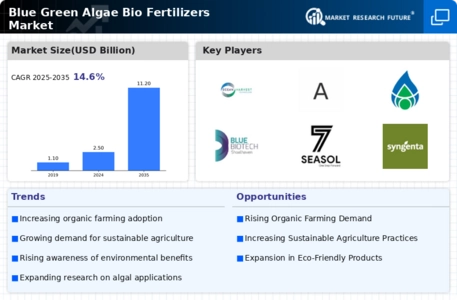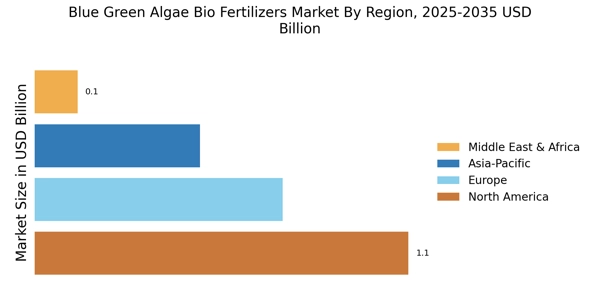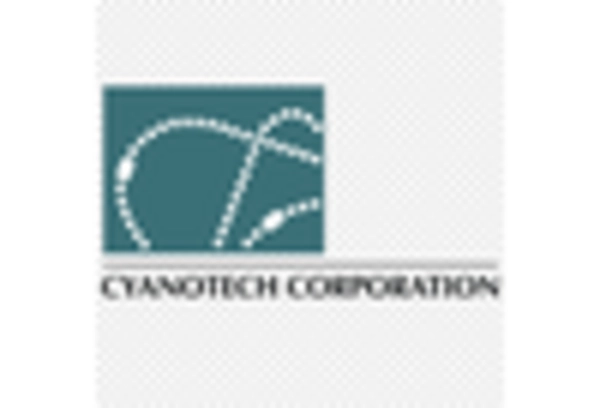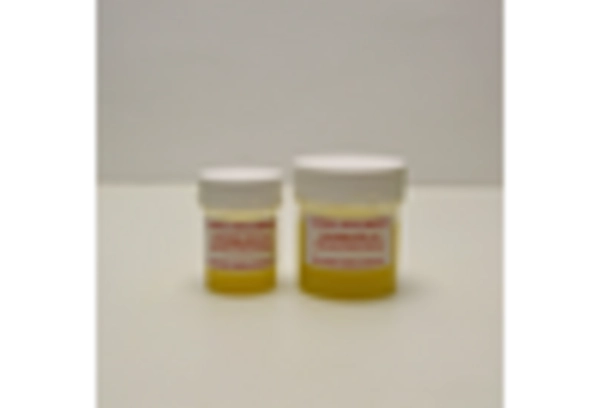Growing Concerns Over Soil Degradation
The Blue Green Algae Bio Fertilizers Market is increasingly relevant in light of growing concerns over soil degradation. Intensive agricultural practices have led to significant soil health issues, prompting a search for sustainable solutions. Blue green algae bio fertilizers offer a promising alternative, as they can enhance soil structure, improve nutrient availability, and promote microbial activity. Recent studies indicate that the use of bio fertilizers can lead to improved crop yields and healthier soils. As awareness of soil health issues continues to rise, the demand for blue green algae bio fertilizers is expected to increase, positioning the market for substantial growth in the coming years.
Increasing Awareness of Sustainable Agriculture
The Blue Green Algae Bio Fertilizers Market is experiencing a surge in interest due to the growing awareness of sustainable agricultural practices. Farmers and consumers alike are becoming more conscious of the environmental impact of chemical fertilizers. This shift towards eco-friendly alternatives is driving demand for bio fertilizers, particularly those derived from blue green algae. As a result, the market is projected to expand significantly, with estimates suggesting a compound annual growth rate of over 10% in the coming years. This trend indicates a potential for increased adoption of blue green algae bio fertilizers as a viable solution for enhancing soil health and crop productivity.
Rising Consumer Preference for Organic Products
The Blue Green Algae Bio Fertilizers Market is benefiting from a notable increase in consumer preference for organic products. As consumers become more discerning about the food they consume, there is a marked shift towards organic farming practices. This trend is likely to bolster the demand for bio fertilizers, particularly those that are natural and sustainable. Market data indicates that organic food sales have been rising steadily, with projections suggesting that the organic sector could reach a valuation of several hundred billion dollars in the near future. Consequently, this consumer behavior is expected to drive the adoption of blue green algae bio fertilizers, as they align with the principles of organic agriculture.
Technological Innovations in Bio Fertilizer Production
The Blue Green Algae Bio Fertilizers Market is being propelled forward by technological innovations in the production of bio fertilizers. Advances in biotechnology and fermentation processes are enhancing the efficiency and effectiveness of blue green algae bio fertilizers. These innovations not only improve the nutrient content of the fertilizers but also streamline production processes, making them more cost-effective. Market analysis indicates that companies investing in research and development are likely to gain a competitive edge, as they can offer superior products that meet the evolving needs of farmers. This technological progress is expected to contribute to the overall growth of the blue green algae bio fertilizers market.
Government Initiatives Promoting Eco-Friendly Practices
The Blue Green Algae Bio Fertilizers Market is poised for growth due to various government initiatives aimed at promoting eco-friendly agricultural practices. Many governments are implementing policies that encourage the use of sustainable fertilizers, including bio fertilizers derived from blue green algae. These initiatives often include financial incentives, subsidies, and educational programs for farmers. As a result, the market is likely to see increased investment and support from both public and private sectors. Recent data suggests that countries with strong regulatory frameworks for sustainable agriculture are witnessing a rise in the adoption of bio fertilizers, indicating a favorable environment for the growth of the blue green algae bio fertilizers market.


















Leave a Comment